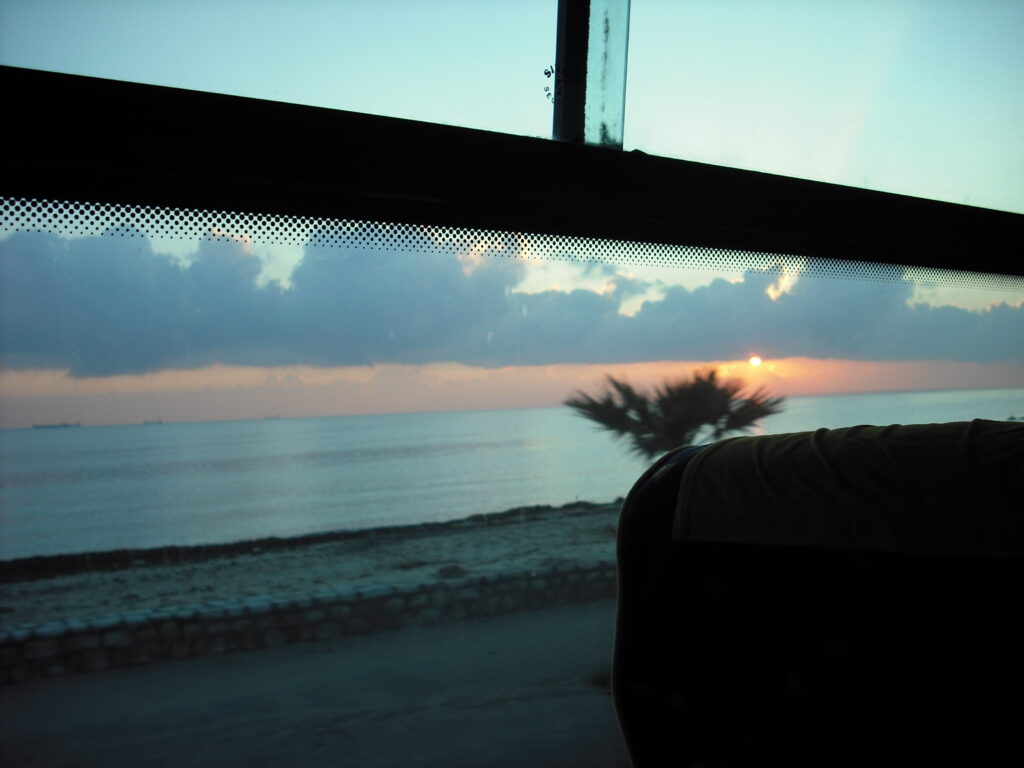It was one of those holiday excursions where the venues visited rose up in surprise to greet the traveller. It was Tunisia in 2008 in a then settled and tranquil country while institutions in the Western world were experiencing the financial storm of a generation.
It had been an early rise as the coach picked us up from our hotel at Hammamet and proceeded south to collect more passengers from hotels along the coastal strip. Later in the morning after having ventured north again we stopped at what appeared as an oasis of green that was in fact a cemetery containing Commonwealth War Graves in the town of Enfidaville. Alighting from the coach it was a moment of sombre reflection. There was appreciation of how well kept was this corner of a foreign land but also recognition of the scale of sacrifices made during the North Africa campaign of World War II. There also appeared to be a significant number of soldiers from New Zealand buried in the cemetry though it would be some time before I came upon details of the conflicts around the now peaceful town that threw some light on this observation.
Those details would in fact come from the book ‘Together we stand’ by James Holland – published in 2005 which gave a detailed account of the North Africa campaign. A key aspect of the North Africa Campaign had in fact been the waging of a successful air campaign against Axis forces. This had largely neutralised the use of Axis Air forces over North African territory as well as the significant degrading of Axis supply lines.
After the successful outcome of the battle of El Alamein, the Allies succeeded in driving the Axis forces westward and where for a considerable distance on the coastal plane no significant defensive line could be established by the Axis forces. Defensive positions however were eventually afforded by the terrain which began around around Enfidaville some 60 miles south of Tunis with the Allies endeavouring to capture these. As this was happening American forces that had landed at Algiers as part of Operation Torch were driving Axis forces eastwards.
At Enfidaville two features described as the hill at Takrouna and the nearby hill of Djebel Bir were identified for initial capture although further north there would also be several strategically important features to overcome. General Montgomery had initially sketched a plan of engagement for Enfidaville but it was left to Lieutenant-General Sir Brian Horrocks to adapt this in the light of revised information about the greater strength of the defending Axis troops. New Zealand forces with a strong Maori contingent were assigned to capture Takrouna and the 4th Indian regiment the feature Djebel Bir. The attacks began under cover of darkness on 19th of May 1943 with Djebel Bir bring taken on the 20th and Takrouna the following day. The tenacity of the Maori assault on Takrouna, however, came to be widely known where two Maori had reached the summit by climbing hand-over-hand up telephone cables. Casualties, however, were heavy on both sides. The Indian regiment also fought with tenacity with Havildar Major Chhelu Ram being awarded a Victoria Cross for gallantry. Gurkha troops were also in close hand-to-hand action wielding their notorious kukri knives. The total of killed and injured within the Indian forces was around 400. The detailed narrative style of the author James Holland describes the essential strengths of individual regiments which include adequate experience of battle conditions, rugged determination to achieve objectives and inspired leadership.
Looking back at a copy of the camera chip which recorded the holiday all those years ago there is no record of images of the cemetery at Enfidaville. It was a scene, however, indelibly etched in memory and it would have been quite in order to have recorded such details for a wider audience. I have, however, included an image of the rising sun over the Mediterranean to remind me of the events of the day.
